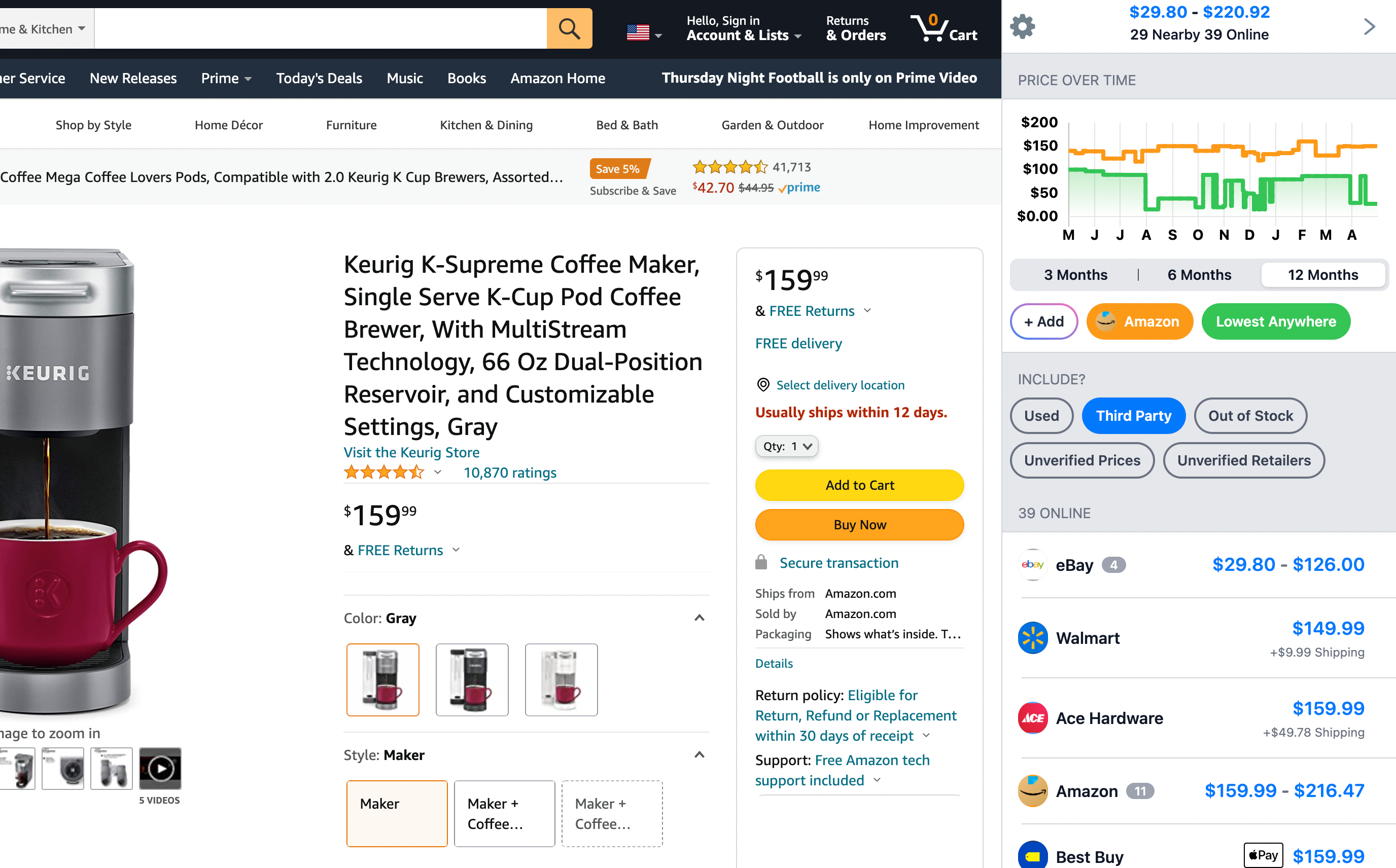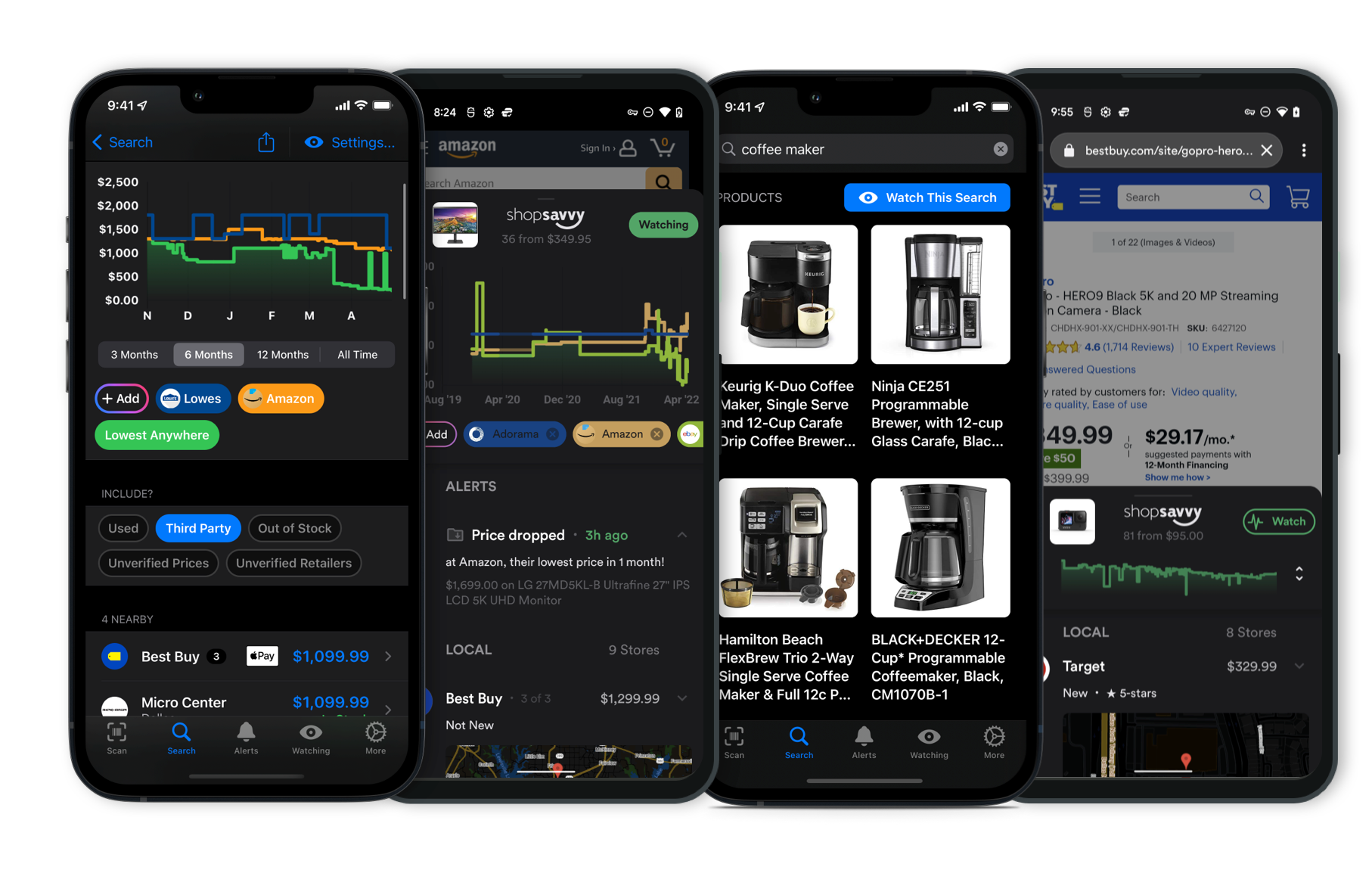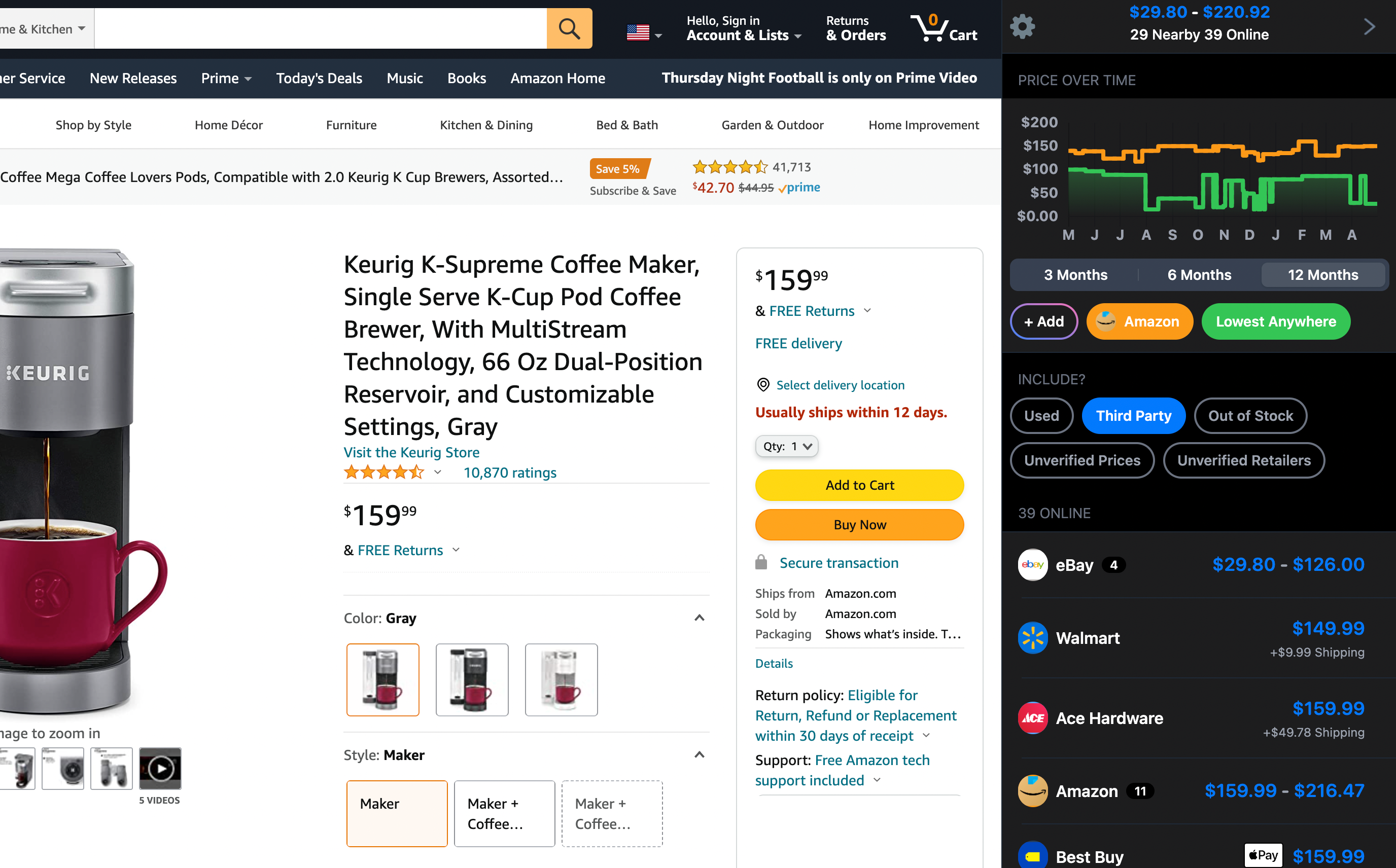Latest Answers about Smart Home Devices
The FRNIAMC Adjustable Saddle Stool Chair has a height range you can adjust between 20 and 29.5 inches. This makes it pretty flexible for different settings like medical clinics and salons. While the manufacturer mentions its ergonomic design with back support, our research offers a fuller story.
Some folks think the seat isn't cushy enough for long periods—it's got less padding than you might expect. And it's made out of PU leather, which isn't as durable or comfy as real leather, so that might be something to consider if you're used to softer seats.
There's also been some mention about the backrest not always staying put, which can be a bit annoying.
On the upside, people like how the saddle shape helps with posture. It can take some strain off your back and neck, which is great if you're prone to back pain from sitting too long. The ergonomic design might be worth it if you're more focused on posture than cushiness.
Setting it up is also pretty easy, and the chair feels solid, with good quality casters that roll smoothly on different floors. If you find yourself needing to move your chair around a lot, that's definitely a plus.
So, while there are some critiques, mainly about the seat comfort and the material quality, the chair does get good marks for helping with posture and being sturdy and easy to put together.
It's all about balancing what you need most. If ergonomic support and being able to move around easily are must-haves for you, this chair might just work, even with its few quirks.
Setting up your GE Cync Indoor Smart Camera is pretty straightforward, so let's get you started on capturing those important moments.
First, make sure you've got the Cync app on your smartphone. It's available for both iOS and Android. Once you have the app, you'll need to create an account or just log in if you've already set one up. The app will then guide you through adding a new device, which in this case is your smart camera.
Next, plug in your camera and let it power up. Once it's ready, open the app and find the option to add a device. You'll be connecting to Wi-Fi, so have your network info ready. Just follow the instructions in the app to finish setting it up.
After you've connected the camera, you can tweak things like motion detection alerts and the recording resolution. The app also lets you decide between cloud or local storage.
The camera supports a microSD card up to 128GB for local storage, which is handy for saving videos without needing a cloud subscription. Our research shows that many folks like the ease and cost-saving aspect of using a microSD card. Just remember, you'll need to buy the card separately since it doesn't come with the camera.
Lastly, the app allows you to adjust privacy settings. You can activate the privacy shutter to turn off the camera and microphone whenever you want, which is nice for some peace of mind.
Overall, setting up the GE Cync Indoor Smart Camera is user-friendly, and the features can be tailored to fit a wide range of needs, whether you want robust security or just some basic surveillance.
Hey! So, the GE Cync Indoor Smart Camera works really well with Amazon Alexa and Google Home.
You can use voice commands to control it, which is super convenient when you're multitasking or your hands are busy. Plus, you can stream live videos to smart displays that support it, which is pretty neat according to our research.
But, if you're all about Apple HomeKit, here's the scoop: the camera doesn't currently work with HomeKit.
That's a bummer if you're looking to keep everything within your Apple ecosystem. It also doesn't support IFTTT, so if you rely on that for automation, you might be out of luck here.
Bottom line, if Apple HomeKit is a big part of your home setup, you might need to look for other cameras that fit better into your system.
Keep that in mind when you're planning your smart home!
Does the Lorex 2K Indoor WiFi Security Camera work with existing Lorex NVR systems?
So, if you're thinking about pairing the Lorex 2K Indoor WiFi Security Camera with your existing Lorex NVR systems, there's a bit you should know.
According to the manufacturer's product description, this camera is designed more as a standalone unit. It uses local storage—there's even a 16GB microSD card included—to save video recordings without needing to rely on a cloud service. This means it's not directly set up to work with Lorex NVR systems.
But don't worry! You can still download recordings right to your phone, which a lot of people find really handy. This way, you get easy access to your security footage without paying for extra services.
However, keep in mind that some folks have reported connectivity issues. These can affect the reliability of the recordings, so it might be a bit hit-or-miss unless you've got a strong network. If you're looking for smooth NVR integration, you may want to ensure your network is solid or consider other Lorex models designed for that purpose.
In summary, if avoiding monthly fees and using local storage is your game, then this camera could be a good fit—provided other factors, like network reliability, are up to par.
If integration with other systems is critical, you might need to explore other options that promise better compatibility with Lorex NVRs.
Connecting the Fieldpiece JL3KM2 to your smartphone is pretty straightforward. It uses Bluetooth to link up with the Fieldpiece Job Link app. While the kit itself doesn't come with an app built-in, once you download the Job Link app, you can see real-time pressure readings directly on your phone or tablet.
According to the manufacturer's description, this kit is great for measuring different pressures like static, gas, and draft, which is really handy for HVAC pros looking to get precise data on system performance. The dual manometer probes send data wirelessly so you don't have to mess around with long hoses, making your work that much smoother.
Our research tells us that many professionals appreciate how easy it is to use this Bluetooth connection, allowing them to move around job sites freely while still getting accurate readings.
Users also seem to value the app's integration because it helps keep everything organized in one place, which is perfect for both diagnosing issues accurately and keeping records.
So, if you're working with gas lines or checking static pressure, pairing the JL3KM2 with the app really simplifies the job.
Overall, if you want a hassle-free and effective way to monitor your HVAC tasks, this setup has got you covered.
The Roborock S8 does a pretty solid job when it comes to dodging obstacles, thanks to its ReactiveAI 2.0 technology. According to the manufacturer's product description, it maneuvers around your home while avoiding things like furniture, so you won't often find it stuck or causing trouble.
Our research backs this up as well—lots of folks say it handles everyday household objects without a hitch.
Now, about staircases—no worries there! The Roborock S8 is equipped with cliff sensors to ensure it won't take a tumble down the stairs. This feature is pretty popular among users, particularly in homes with multiple levels, since it helps keep the robot safe when cleaning upstairs areas.
So, if you're looking for a vacuum that won't crash into stuff or fall down the stairs, the Roborock S8 seems to be a dependable choice.
The Sonos Sub Mini is a great choice if you're looking to amp up the bass in your Sonos setup. It's got a hefty 250 watts of power, so it's definitely going to make your audio experience richer.
But, like with any tech, there are some connectivity things to keep in mind to make sure it's working perfectly with your other Sonos devices. Most folks connect the Sub Mini wirelessly using Wi-Fi, which makes it blend in seamlessly with other Sonos speakers like the Arc, Beam, and Ray.
Our research shows that Wi-Fi is pretty much everyone's go-to since it makes managing your system through the Sonos app super easy. It's all about convenience and getting that performance edge.
If your Wi-Fi isn't cutting it, there's always the option to go with an Ethernet cable. That's great for a more stable connection. But, just a heads up—Bluetooth isn't an option here. Sonos is sticking with its strategy of keeping everything within its networked audio system, so if you want to hook up something that's Bluetooth-only, you're out of luck.
From what we've seen, the setup process is pretty straightforward, thanks to the Sonos app. It not only makes managing things easier, but it also helps you tweak the audio to fit your room perfectly.
So, if you're already into Sonos gear or thinking of joining the club, using Wi-Fi for the Sub Mini will make sure you get the best sound. Just remember, it's meant to be part of a Sonos family, so make sure your setup is all set, whether you're going wired or chilling with Wi-Fi.
So, from what we've gathered, the Dolphin Sigma Robotic Pool Cleaner does a great job overall, but it doesn't directly connect with smart home systems like Amazon Alexa or Google Assistant.
The Sigma has Wi-Fi, which means you can control it remotely using the MyDolphin Plus app. However, there's no support for using voice commands with digital assistants.
The app itself is pretty handy. You can start and stop cleaning, set up a weekly cleaning schedule, and even steer the cleaner manually with your phone. But, you'll be doing all of this through the app since you can't connect it to voice platforms like Alexa or Google Assistant—something the manufacturer's description backs up.
If being able to use voice control is super important to you, you might want to look into pool cleaners that do offer smart home integration.
But keep in mind, a lot of folks are happy with the Sigma and how it performs, even without that feature. The app's functionality and the cleaner's performance seem to resonate well with pool owners.
In short, if you really need smart home connectivity, you might need to check out other options.
But for many, the Sigma's cleaning skills and the convenience of its app still make it a solid pick among pool owners.
The Roborock S8 has a pretty solid battery life.
According to the manufacturer's description, it can run for up to 180 minutes on a single charge.
So, if you have a larger home, it's nice because you won't have to recharge it too often while it's doing its thing around the house.
Yep, the Logitech Pure-Fi Anywhere 2 speakers should work with your iPhone. The manufacturer specifically notes they're designed to be compatible with various iPods and iPhones, so hooking your device up for audio playback should be a breeze.
A nice feature of these speakers is the built-in rechargeable battery, which is said to last up to 10 hours on one charge. That's pretty handy for long listening sessions, whether you're chilling at home or out and about.
Our research suggests that while most people find the battery life satisfactory, you might see slight variations depending on how loud you play your music. Many folks mention getting around 9 hours on average when cranking up the volume.
To help your battery last as long as possible, it's a good idea to run it through a few full charge cycles at first. This can help gauge how well it performs and keep it running smoothly.
If you do run into any battery issues, reaching out to Logitech's customer support might be worth considering, as plenty of people have had good experiences with their service, especially for battery-related stuff.
The speakers also have a battery life indicator, which is cool for keeping track so you don't unexpectedly run out of juice. And they're compact enough to easily take on the go while still delivering solid sound quality.
In short, if you're after a portable speaker that pairs well with your iPhone and offers decent sound, the Logitech Pure-Fi Anywhere 2 is a solid pick.
With its iPhone compatibility, reliable battery, and a few handy features, you're set for a good listening experience wherever you go.
 Download ShopSavvy App
Download ShopSavvy AppCompare prices for anything in real-time, set price alerts, watch for deals by keyword, and much more
 Install ShopSavvy Browser Extension
Install ShopSavvy Browser ExtensionCompare and track prices automatically while you shop online at thousands of websites.
Footer 1
Published
Subscribe for Updates
Get the latest news, and updates on ShopSavvy. You'll be glad you did!




